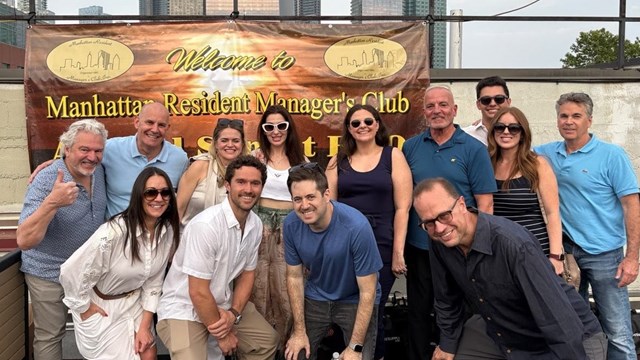
Though we tend to think of New York City as modern and up-to-date, this helluva town has a history spanning more than 350 years. Only a few remnants of 1654 survive to remind us of that fact, but of more recent vintage - say of the 19th century - there are whole neighborhoods: Greenwich Village, Brooklyn Heights, the Upper West Side, reminiscent of that era. Some of them are protected from unrestrained demolition because they have been designated historic districts by the city's Landmarks Preservation Commission (LPC). Others are not, and unless somebody looks out for them, they could vanish like their predecessor neighborhoods.
One group looking out for New York City's architectural and community history is the Historic Districts Council (HDC). According to its mission statement, the HDC is the citywide advocate for New York's historic neighborhoods - designated or not. HDC is a nonprofit organization, independent and nonpartisan, which was formed in 1971 as an offshoot of the older Municipal Art Society to work on special neighborhood-based projects. HDC became more advocacy-oriented in the late 1970s, and in 1986 incorporated as an independent organization with its own officers.
The council's advocacy takes different forms. For the more than 80 designated historic districts in the city, it advises building owners and community groups about what regulations govern their districts and how to work within them. HDC also reviews applications for alterations to buildings in historic districts when they come before the LPC - about 400 a year - and writes testimony on many of them.
Neighborhoods that are not designated and want landmark protection often come to HDC to find out how to go about getting it. The staff meets with local leaders to describe the process to them, and a committee tours the district by foot to figure out what boundaries HDC could support. Throughout, HDC offers advice, provides contacts, helps plan projects that will further the effort and helps get elected officials involved. In the entire city, about 40 local groups are at some stage in this process at any given time.
When the area in question lacks local community leaders, HDC may initiate the historic designation process itself. Such a project is currently underway now for the John Street/Maiden Lane district in Lower Manhattan. HDC conducted a preliminary survey of basic conditions, assembled enough research to nominate the district to the New York State Historic Preservation office, and is now planning a fundraiser to hire an architectural historian to complete the application.
In addition to its advocacy activities, HDC is also involved in preservation projects with other organizations. Recently, the organization joined Landmark West! and The Preservation League of New York State to nominate the former Gallery of Modern Art at 2 Columbus Circle to the "11 Most Endangered Places" list for 2004 of the National Trust for Historic Preservation. And during July and August HDC will be collaborating with the Institute of American Architects on a series of public seminars on preservation.
On its own or with a co-sponsor, HDC holds an annual conference that draws people from all over the city. Last March the subject was "Cultural Landmarks" - places of cultural significance that are important to people's shared sense of place and history - and the co-sponsor was Place Matters, a project of City Lore and the Municipal Art Society.
Simeon Bankoff, HDC's executive director, leads a small-but-tireless, professionally trained staff. They have to be tireless because, as Mr. Bankoff says, "Preservation - especially in this city - sometimes seems like a losing battle; no sooner is one building saved than another, or perhaps three others are threatened."
According to Bankoff, what keeps HDC involved in this Sisyphean task is a complete commitment to the idea of the city and a respect not only for previous New Yorkers, but for future ones as well. "The people who invested themselves in building this city did so for a multitude of reasons - mostly to make money, but they did so in the belief that they were making a place that people would want to be. We are the inheritors of that belief, and it's our obligation to pass along that investment to the people who will come after us."
The HDC board of directors is presided over by attorney David Goldfarb of Staten Island, and consists of 25 people from all five boroughs. They are people of wide-ranging disciplines - architects, lawyers, artists, journalists, preservationists, city planners, academics, and small-business owners, and they function as an expanded staff for the organization. Volunteers and interns rotate in and out of the office to help with the large volume of work.
Financing for HDC's activities comes from governmental organizations, private foundations, funds, and corporations, and from individual donations from Friends of the HDC, preservation-minded neighborhood residents and contributors who provide vital support for all our programs and activities. According to the HDC Web site (www.hdc.org), "Friends are HDC's link to New York's historic neighborhoods, providing the human foundation for our advocacy efforts and are the core constituency for our educational programming." More than 300 Friends contribute on a regular basis and participate in HDC's public programs.
To learn more about the HDC, to make a contribution, or to get involved in preserving your own neighborhood's historic value and character, visit HDC's website, or call 212-614-9107.





Leave a Comment